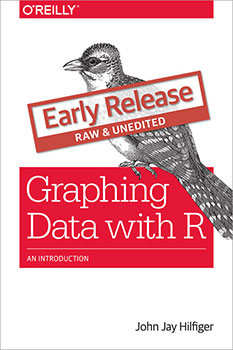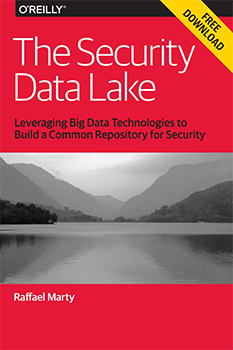"Big Data Components" entries

Big data, small cluster
Finding new ways to shrink disk space for storing partitionable data.
Register for the free webcast, “Extending Cassandra with Doradus OLAP for High Performance Analytics,” which will be held July 29 at 9 a.m. PT.
Engineers at Dell were developing customer apps when they found that the query response times their customers were demanding — something on the order of seconds (in other words, the need to scan millions of objects/second) — required a new type of query engine. This led them on a four-year journey to create Doradus, one of Dell Software Group’s first open-source projects.
Doradus is a server framework that runs on top of Cassandra. To build Doradus, the team borrowed from several well-accepted paradigms. They used traditional OLAP techniques to allow data to be arranged into static, multidimensional cubes. They leveraged the vertical orientation and efficient compression of columnar databases. And, from the NoSQL world, they employed sharding. The result: a storage and query engine called Doradus OLAP that stores data up to 1M objects/second/node, providing nearly real-time data warehousing. This architecture also allows for extreme compression of the data, sometimes producing up to a 99% reduction in space usage.
This extremely dense storage means that data that once took multiple nodes can now be stored on a single node, allowing for fast queries without the expense of a large cluster. Because Doradus is built on top of Cassandra, the option to scale out is still there. This allows for sharding and replication, and also takes advantage of Cassandra’s failover features. Read more…

The truth about MapReduce performance on SSDs
Cost-per-performance is approaching parity with HDDs.
Karthik Kambatla co-authored this post.
It is well-known that solid-state drives (SSDs) are fast and expensive. But exactly how much faster — and more expensive — are they than the hard disk drives (HDDs) they’re supposed to replace? And does anything change for big data?
I work on the performance engineering team at Cloudera, a data management vendor. It is my job to understand performance implications across customers and across evolving technology trends. The convergence of SSDs and big data does have the potential to broadly impact future data center architectures. When one of our hardware partners loaned us a number of SSDs with the mandate to “find something interesting,” we jumped on the opportunity. This post shares our findings.
As a starting point, we decided to focus on MapReduce. We chose MapReduce because it enjoys wide deployment across many industry verticals — even as other big data frameworks such as SQL-on-Hadoop, free text search, machine learning, and NoSQL gain prominence.
We considered two scenarios: first, when setting up a new cluster, we explored whether SSDs or HDDs, of equal aggregate bandwidth, are superior; second, we explored how cluster operators should configure SSDs, when upgrading an HDDs-only cluster. Read more…

Real-time analytics within the transaction
Integrated data stream platforms are poised to supplant the lambda architecture.
Data generation is growing exponentially, as is the demand for real-time analytics over fast input data. Traditional approaches to analyzing data in batch mode overcome the computational problems of data volume by scaling horizontally using a distributed system like Apache Hadoop. However, this solution is not feasible for analyzing large data streams in real time due to the scheduling I/O overhead it introduces.
Two main problems occur when batch processing is applied to stream or fast data. First, by the time the analysis is complete, it may already have been outdated by new incoming data. Second, the data may be arriving so fast that it is not feasible to store and batch-process them later, so the data must be processed or summarized when it is received. The Square Kilometer Array (SKA) radio telescope is a good public example of a system in which data must be preprocessed before storage. The SKA is a distributed radio observation project where each base station will receive 10-30 TB/sec and the Central Unit will process 4PB/sec. In this scenario, online summaries of the input data must be computed in real time and then processed — and significantly reduced in size — data is what’s stored.
In the business world, common examples of stream data are sensor networks, Twitter, Internet traffic, logs, financial tickers, click streams, and online bids. Algorithmic solutions enable the computation of summaries, frequency (heavy hitter) and event detection, and other statistical calculations on the stream as a whole or detection of outliers within it.
But what if you need to perform transaction-level analysis — scans across different dimensions of the data set, for example — as well as store the streamed data for fast lookup and retrospective analysis? Read more…

Real-time, not batch-time, analytics with Hadoop
How big data, fast data, and real-time analytics work together in the real world.
Attend the VoltDB webcast on June 24, 2015 with John Hugg to learn more on how to build a fast data front-end to Hadoop.
Today, we often hear the phrase “The 3 Vs” in relation to big data: Volume, Variety and Velocity. With the interest and popularity of big data frameworks such as Hadoop, the focus has mostly centered on volume and data at rest. Common requirements here would be data ingestion, batch processing, and distributed queries. These are well understood. Increasingly, however, there is a need to manage and process data as it arrives, in real time. There may be great value in the immediacy of that data and the ability to act upon it very quickly. This is velocity and data in motion, also known as “fast data.” Fast data has become increasingly important within the past few years due to the growth in endpoints that now stream data in real time.
Big data + fast data is a powerful combination. However, adding real-time analytics to this mix provides the business value. Let’s look at a real example, originally described by Scott Jarr of VoltDB.
Consider a company that builds systems to manage physical assets in precious metal mines. Inside a mine, there are sensors on miners as well as shovels and other assets. For a lost shovel, minutes or hours of reporting latency may be acceptable. However, a sensor on a miner indicating a stopped heart should require immediate attention. The system should, therefore, be able to receive very fast data. Read more…

Building self-service tools to monitor high-volume time-series data
The O'Reilly Data Show Podcast: Phil Liu on the evolution of metric monitoring tools and cloud computing.
One of the main sources of real-time data processing tools is IT operations. In fact, a previous post I wrote on the re-emergence of real-time, was to a large extent prompted by my discussions with engineers and entrepreneurs building monitoring tools for IT operations. In many ways, data centers are perfect laboratories in that they are controlled environments managed by teams willing to instrument devices and software, and monitor fine-grain metrics.
During a recent episode of the O’Reilly Data Show Podcast, I caught up with Phil Liu, co-founder and CTO of SignalFx, a SF Bay Area startup focused on building self-service monitoring tools for time series. We discussed hiring and building teams in the age of cloud computing, building tools for monitoring large numbers of time series, and lessons he’s learned from managing teams at leading technology companies.
Evolution of monitoring tools
Having worked at LoudCloud, Opsware, and Facebook, Liu has seen first hand the evolution of real-time monitoring tools and platforms. Liu described how he has watched the number of metrics grow, to volumes that require large compute clusters:
One of the first services I worked on at LoudCloud was a service called MyLoudCloud. Essentially that was a monitoring portal for all LoudCloud customers. At the time, [the way] we thought about monitoring was still in a per-instance-oriented monitoring system. [Later], I was one of the first engineers on the operational side of Facebook and eventually became part of the infrastructure team at Facebook. When I joined, Facebook basically was using a collection of open source software for monitoring and configuration, so these are things that everybody knows — Nagios, Ganglia. It started out basically using just per-instance instant monitoring techniques, basically the same techniques that we used back at LoudCloud, but interestingly and very quickly as Facebook grew, this per-instance-oriented monitoring no longer worked because we went from tens or thousands of servers to hundreds of thousands of servers, from tens of services to hundreds and thousands of services internally.

Create your graphs with R
A deep-dive into exploratory and presentation graphs.
Buy “Graphing Data with R: An Introduction” in early release. Editor’s note: this is an excerpt of “Graphing Data with R: An Introduction,” by John Jay Hilfiger.
Graphs are useful both for exploration and for presentation. Exploration is the process of analyzing the data and finding relationships and patterns. Presentation of your findings is making your case to others who have not studied the data as intensively as you have yourself. While one is exploring the data, graphs can be stark, lean, and somewhat unattractive. The data analyst, who knows the data and is getting to know it better with each graph made, does not need all the titles, labels, reference details, and colors that someone sitting through a presentation might expect, and might, indeed, find necessary. Furthermore, adding all this stuff just slows down the analyst. Also, some graphs will prove to be dead ends, or just not very interesting. Consequently, many graphs may be discarded during the discovery journey.As the process of exploration continues, adding some details may make relationships a little clearer. As the analyst gets closer to presentation and/or publication, the graphs become more detailed and prettier. There probably will have been many plain graphs in the process of analysis and relatively few beautiful graphs that appear in the final report. Read more…

Validating data models with Kafka-based pipelines
A case for back-end A/B testing.
Start the O’Reilly “Introduction to Apache Kafka” training video for free. In this video, Gwen Shapira shows developers and administrators how to integrate Kafka into a data processing pipeline.
A/B testing is a popular method of using business intelligence data to assess possible changes to websites. In the past, when a business wanted to update its website in an attempt to drive more sales, decisions on the specific changes to make were driven by guesses; intuition; focus groups; and ultimately, which executive yelled louder. These days, the data-driven solution is to set up multiple copies of the website, direct users randomly to the different variations and measure which design improves sales the most. There are a lot of details to get right, but this is the gist of things.
When it comes to back-end systems, however, we are still living in the stone age. Suppose your business grew significantly and you notice that your existing MySQL database is becoming less responsive as the load increases. Suppose you consider moving to a NoSQL system, you need to decide which NoSQL solution to pick — there are a lot of options: Cassandra, MongoDB, Couchbase, or even Hadoop. There are also many possible data models: normalized, wide tables, narrow tables, nested data structures, etc.
A/B testing multiple data stores and data models in parallel
It is surprising how often a company will pick a solution based on intuition or even which architect yelled louder. Rather than making a decision based on facts and numbers regarding capacity, scale, throughput, and data-processing patterns, the back-end architecture decisions are made with fuzzy reasoning. In that scenario, what usually happens is that a data store and a data model are somehow chosen, and the entire development team will dive into a six-month project to move their entire back-end system to the new thing. This project will inevitably take 12 months, and about 9 months in, everyone will suspect that this was a bad idea, but it’s way too late to do anything about it. Read more…

The unwelcome guest: Why VMs aren’t the solution for next-gen applications
Scale-out applications need scaled-in virtualization.
 Data center operating systems are emerging as a first-class category of distributed system software. Hadoop, for example, is evolving from a MapReduce framework into YARN, a generic platform for scale-out applications.
Data center operating systems are emerging as a first-class category of distributed system software. Hadoop, for example, is evolving from a MapReduce framework into YARN, a generic platform for scale-out applications.
To enable a rich ecosystem of diverse applications to coexist on these platforms, providing adequate isolation is crucial. The isolation mechanism must enforce resource limits, decouple software dependencies among applications and the host, provide security and privacy, confine failures, etc. Containers offer a simple and elegant solution to the problem. However, a question that comes up frequently is: Why not virtual machines (VMs)? After all, these systems face a number of the same challenges that have been solved by virtualization for traditional enterprise applications.
All problems in computer science can be solved by another level of indirection, except of course for the problem of too many indirections” — David Wheeler

More tools for managing and reproducing complex data projects
A survey of the landscape shows the types of tools remain the same, but interfaces continue to improve.
As data projects become complex and as data teams grow in size, individuals and organizations need tools to efficiently manage data projects. A while back, I wrote a post on common options, and I closed that piece by asking:
Are there completely different ways of thinking about reproducibility, lineage, sharing, and collaboration in the data science and engineering context?
At the time, I listed categories that seemed to capture much of what I was seeing in practice: (proprietary) workbooks aimed at business analysts, sophisticated IDEs, notebooks (for mixing text, code, and graphics), and workflow tools. At a high level, these tools aspire to enable data teams to do the following:
- Reproduce their work — so they can rerun and/or audit when needed
- Collaborate
- Facilitate storytelling — because in many cases, it’s important to explain to others how results were derived
- Operationalize successful and well-tested pipelines — particularly when deploying to production is a long-term objective
As I survey the landscape, the types of tools remain the same, but interfaces continue to improve, and domain specific languages (DSLs) are starting to appear in the context of data projects. One interesting trend is that popular user interface models are being adapted to different sets of data professionals (e.g. workflow tools for business users). Read more…

How to implement a security data lake
Practical tips for centralizing security data.
But let’s be realistic. You probably have numerous repositories for your security data. Your Security Information and Event Management (SIEM) solution doesn’t scale to the volumes of data that you would really like to collect. This, in turn, makes it hard to use all of your data for any kind of analytics. It’s likely that your tools have to operate on multiple, disconnected data stores that have very different capabilities for data access and analysis. Even worse, during an incident, how many different consoles do you have to touch before you get the complete picture of what has happened? I would guess probably at least four (I would have said 42, but that seemed a bit excessive).
When talking to your peers about this problem, do they tell you to implement Hadoop to deal with the huge data volumes? But what does that really mean — is Hadoop really the solution? After all, Hadoop is a pretty complex ecosystem of tools that requires skilled and expensive people to implement and maintain. Read more…






